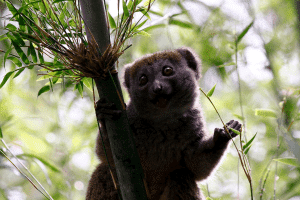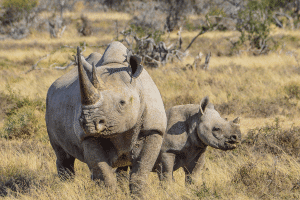Giant Otters
The human threat
Number of Giant otters left in the wild
5000
Giant otter hunting was banned in
1973
% of their habitat lost
80%
Giant otters are way bigger than your regular otter… they are giant after all! Native to South America, they are the longest member of the Mutelidae (weasel) family, growing up to a massive length of 5.6ft.
Like us, Giant otters are a very social species, often supporting three to eight members in typical family groups. Their favourite food is fish, but they’re really brave so have also been known to take on anacondas and caimans.
Giant otters typically live in and along the Amazon: not the online marketplace, the rainforest. Like lots of other animals that live there, Giant otters are struggling as their habitats disappear. Because lots of humans also eat their favourite fish, they are also having trouble finding enough to eat.
WildLife Foundation are working with an award winning project in the Cantao region of Brazil with an organisation called Instituto Araguaia This project studies the otter population of the region to help develop a conservation masterplan for the otters here. At the same time, they are protecting them from poachers and helping stop illegal fishing in the area which takes away the otters’ food source.
Like us, Giant otters are a very social species, often supporting three to eight members in typical family groups. Their favourite food is fish, but they’re really brave so have also been known to take on anacondas and caimans.
Giant otters typically live in and along the Amazon: not the online marketplace, the rainforest. Like lots of other animals that live there, Giant otters are struggling as their habitats disappear. Because lots of humans also eat their favourite fish, they are also having trouble finding enough to eat.
WildLife Foundation are working with an award winning project in the Cantao region of Brazil with an organisation called Instituto Araguaia This project studies the otter population of the region to help develop a conservation masterplan for the otters here. At the same time, they are protecting them from poachers and helping stop illegal fishing in the area which takes away the otters’ food source.

Threats
Human-Giant otter conflict:
In the past, poaching for their velvety pelts (their fur and skin) was the Giant otters biggest threat. Now, they are most threatened by increased human activity including the destruction of their habitats, commercial over-fishing, and mismanaged tourism.Working with
Giant Otters
Protecting Giant Otters with Instituto Araguaia
We work with Instituto Araguaia, who run a key project to protect Giant otters who live in the Araguaia River, in the Cantao State Park in Brazil, near the amazon basin. They are helping through research, population monitoring, and the preservation of fish stocks in the river to make sure the otters have plenty to eat.Facts
Giant otters are most active between 10-11am and 3-5pm. Who can blame them, we’re not morning people either.
As avid swimmers, Giant otters are well adapted to their surroundings with their paddle like tails, webbed claws, water repellent fur and the ability to close their nostrils and ears when swimming – so you wouldn’t want to take them on in a swimming contest!
As avid swimmers, Giant otters are well adapted to their surroundings with their paddle like tails, webbed claws, water repellent fur and the ability to close their nostrils and ears when swimming – so you wouldn’t want to take them on in a swimming contest!
Seven Worlds, One Planet
We work with Instituto Araguaia, who run a key project to protect Giant otters who live in the Araguaia River, in the Cantao State Park in Brazil, near the Amazon basin.









